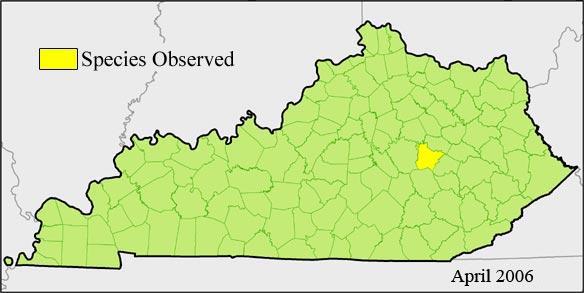P�h�o�t�o� �b�y� �D�a�v�i�d� �G�i�b�s�o�n� �@� �U�S�D�A�-�N�R�C�S� �P�L�A�N�T�S� �D�a�t�a�b�a�s�e�
|
Habitat:
In IL, cool, nw and ne-facing, floristically rich, dry-mesic forests. Occurs in oak-hickory forest leaf litter zones to moss and lichen dominated substrates including sphagnum. (from report submitted to ILHP.)
|
Species Description:
Grass with culms 85-95 cm tall and erect from slender, creeping rhizomes. Sheaths are without hairs on the collar. The ligule is 2-5 mm long. Blades are flat, without hairs, the leaf above the sheath is flat, without hairs, long-tapering, rather thin, 4 to 11 mm wide and 10 to 33 cm long. Blade margins are rough to the touch. Panicles are 12-14 cm long, with its branches narrowly ascending, at least some of them naked at the base. Spikelets are (3.75)4-5.5 mm long; the lemma is 4 mm long and minutely rough on the keel; the callus hairs are in tufts at the sides, rather dense, some of them half to three-fourths as long as the lemma; the rachilla is 0.5 mm long, the hairs as much as 2 mm long; the awn arises from about one-fourth above the base, is bent abruptly and is about as long as the lemma. (adapted from Hitchcock 1950).
|
Phenology:
Flowering Period: Early July to late September.
|
Additional Information at NatureServe
|
Diagnostic Characteristics:
Calamagrostis porteri ssp. porteri and C. porteri ssp. insperata are similar in physical appearance and may overlap in range in Kentucky. In C. porteri ssp porteri, sheaths are densely pubescent at the summit, while in ssp. insperata, sheaths are glabrous or rarely with a few scattered hairs. C. porteri has a consistent fringe of hair around the ligules at the nodes, which is generally sparse in C. porteri ssp. insperata . In Kentucky, C. porteri ssp. insperata, culms may be stouter than those found in C. porteri (J. Campbell pers comm). Plant is a medium sized grass with a loose panicle. The two glumes are longer than the lemma and an awn that protrudes bent and sidewise from the glumes arises near the base of the lemma.
|
Management:
May tolerate some timber removal if done without excessive soil disturbance (discing/chopping) and if immediate vicinity of plant is protected from debris and direct cutting etc. Disturbance of surrounding slopes such as ATV trails or timber removal or any activity that results in increased erosion or weed invasion will be detrimental. Exotic pest plants are a threat to this species.
|
Global Range:
Its range is restricted to the central United States, including southern Ohio, Illinois, and Indiana, Kentucky, and the Ozark Plateau region of Missouri and Arkansas.
|
Known Kentucky Occurrences:

|